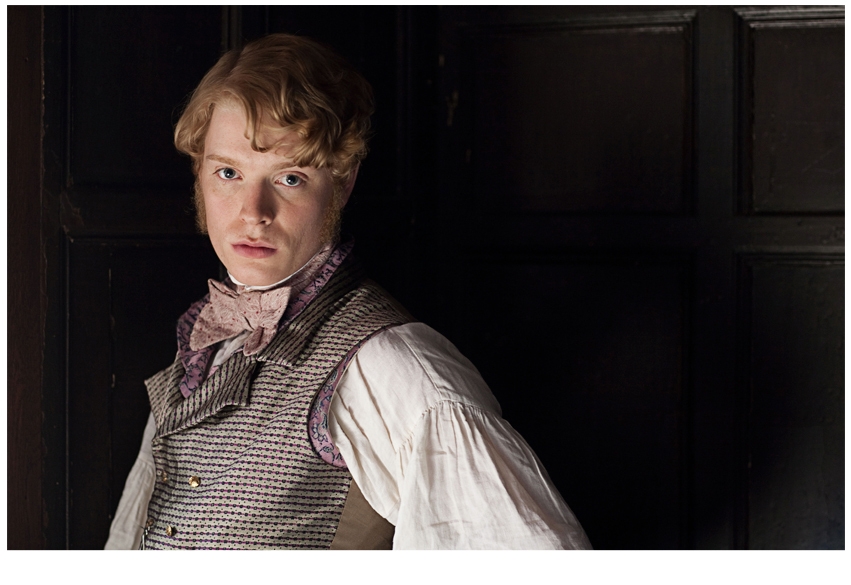Nobody is going to be excused Dickens in his bicentennial year. This is good news for television people, since Dickens wrote his novels in the form of screenplays. He worked closely with his illustrators, making sure the scene they drew was exactly what he had in mind. He even acted out the roles as he wrote them, so the family would hear Fagin, or Pecksniff, or Squeers booming from his study as he worked.
Someone pointed out in the Arena documentary, Dickens on Film (BBC4, Tuesday), that it is impossible to overact any of those characters, as clips of W.C. Fields and Bob Hoskins in the role of Micawber proved. It must make a welcome change for thesps who spend a lifetime perfecting subtle and suggestive; instead they can roll their eyes, puff out their cheeks, gurn, roar, wheedle, chortle and cringe to their hearts’ content. Panto after Harold Pinter, a holiday for hams.
Dickens interleaved his scenes, exactly like a film, rapidly cutting from one plot strand to another. Two of the great early film-makers, Griffiths and Eisenstein, paid tribute to the way he had influenced their structure and their visual style. His books came out like a weekly television serial, leaving people barely able to contain their excitement till the next episode. (Older readers will remember the BBC Sunday teatime serials of the past. These days we are rarely expected to wait a whole week for our next fix; the show is streamed over a few days, followed closely by the DVD, purchased by all those people who were nagged by their friends: ‘Oh, you missed it, what a shame, it was absolutely marvellous…’)
The fact that Dickens was in a sense the first film-maker, long before the technology was invented, probably accounts for the fact that we all have vivid pictures in our minds of the best-known scenes: Oliver Twist asking for more, the Cratchits’ Christmas dinner, the death of Little Nell, Magwitch grabbing Pip. They all blur into one, though it was interesting how, in David Lean’s film of Great Expectations, Pip looks like a prep school boy running home through Belgravia rather than a child from a forge, and even Magwitch speaks received pronunciation — not quite Brian Sewell, but a ruffian who’s got a job reading the BBC news. How strange that as recently as the 1940s a coarse accent was thought too savage and distressing for cinemagoers’ ears, even from the mouth of a convict.
When she adapted The Mystery of Edwin Drood (BBC2, Tuesday and Wednesday) Gwyneth Hughes was able to use all the histrionic characters Dickens provided, but lacked one crucial element in a murder mystery — the solution — owing to the author’s death. No one is certain whom he had in mind as the killer, though it seems pretty likely that it was to be Drood’s uncle John Jasper, choirmaster, drug fiend and part-time psychopath, a cross between the Boston Strangler and Gareth Malone.
So it was a bold and rather brilliant step for Ms Hughes to begin the adaptation with Jasper murdering Edwin Drood as part of an opium-fuelled dream, then to close the first episode with the actual event. Later it must have taken a terrific leap to write the stage direction, ten minutes before the end of the second and final part, ‘enter Edwin Drood’.
Basically she had used Dickens’s material for most of episode one, then tore up the book for episode two. By the end we were deep in a traditional murder mystery, and you half-expected David Suchet to gather everyone in the crypt for the dénouement. ‘Ah ha, my frenz, zurr empty tomb did not fool Poirot, no, no. I realised that zurr young Edwin Drood could not be dead! It was his fazzer, ’oo ’ad not been killed in a mining aggsident, but ’oo ’ad been strangled by zurr scarf of zurr choirmaster…’ It all got a little complicated; I was reminded of Tom Lehrer’s song about Oedipus Rex: ‘His daughter was his sister and his son was his brother/ But he loved his mother!’
So it all got a bit silly, but that doesn’t matter. What intrigued me was the cinematography. Usually in costume dramas we get very few close-ups. When you’ve spent hundreds of pounds on the heroine’s dress, or tens of thousands to hire the 93-bedroom Gasket Hall, you can’t be wasting screen space on mere faces. Yet this intimacy is the heart of all television drama; it’s what sets it apart from the stage. This Drood was not afraid of letting the actors do the work — Jasper’s subliminal rage, Drood’s perky arrogance, and the wonderful Durdle, all sinister muttering and secrets. For all its dottiness, this production set new standards.





Comments